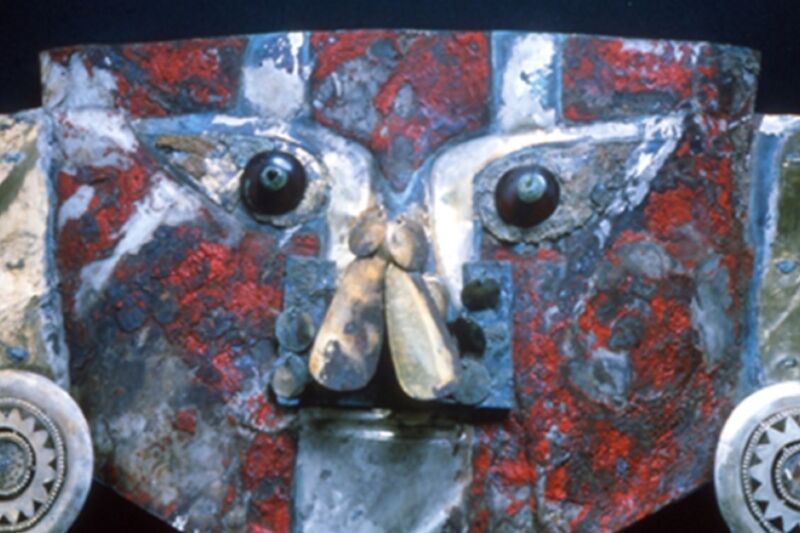
Enlarge / A red paint sample taken from a 1,000-year-old mask excavated from a Sicán tomb in Peru contains human blood and bird egg proteins, in addition to a red cinnabar pigment. (credit: Adapted from E. Pires et al., JPR, 2021)
Ever since a 1,000-year-old gold mask was excavated from a tomb in Peru 30 years ago, archaeologists have puzzled over the surprising longevity of the red paint on its surface. According to a recent paper published in the Journal of Proteome Research, one of the secret ingredients is human blood, along with bird egg whites.
The Sican culture was prominent along the northern coast of modern Peru between the 9th and 14th centuries. There are numerous tombs of elite members of that society from the Middle Sican period (900-1100 CE) scattered throughout the region, but most of the tombs fell prey to looters. “Practically all Middle Sican gold artifacts in museums and private collections were looted from archaeological sites in modern times,” the authors wrote. “Once within illicit trade networks, these objects are commonly subject to various undocumented interventions to enhance their aesthetic qualities.”
This can involve stripping off paint and removing pigments, feathers, and bangles and cleaning the artifacts so carelessly that any ancient tool marks were smoothed over. That presents a significant challenge to researchers seeking to better understand the cultural significance of such artifacts.
